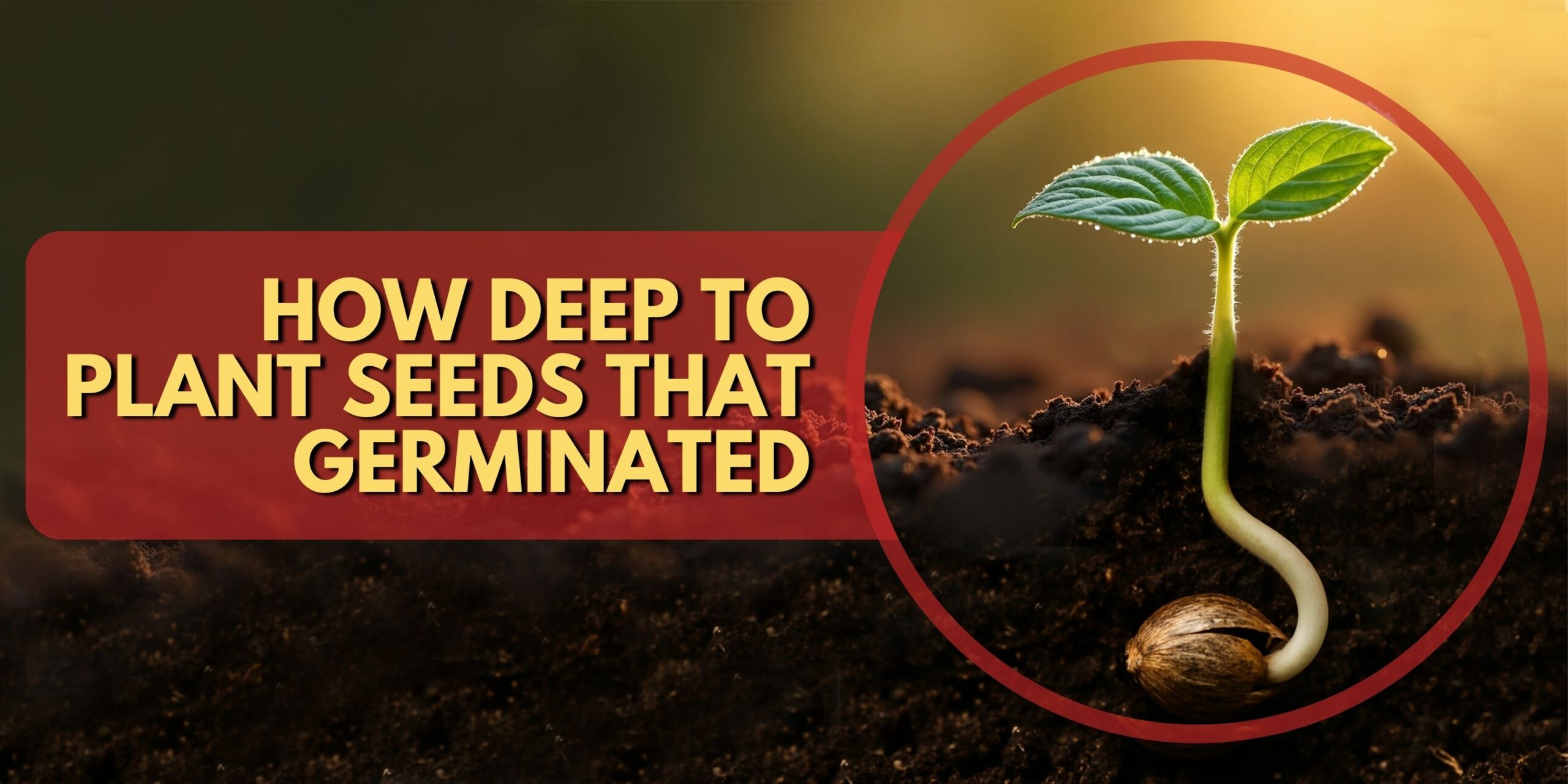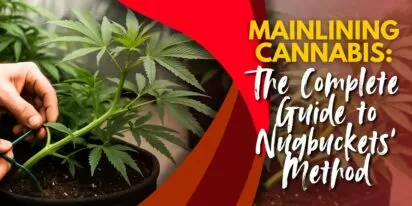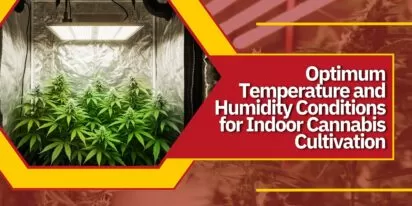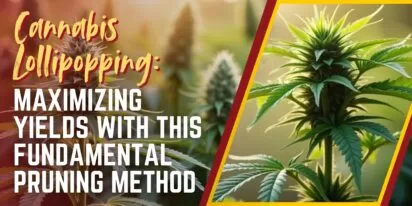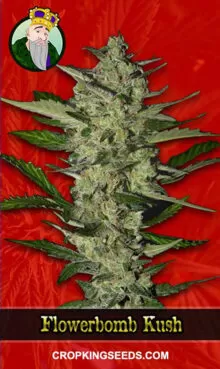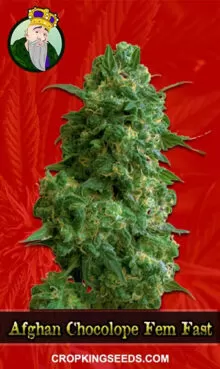Developing a good and strong cannabis plant mostly depends on the right planting depth. It influences general potency of the cannabis plant, seedling emergence, and root development directly. Knowing the proper depth at which to put cannabis seeds is crucial throughout their germination. Incorrect depth can impede seedling development, therefore causing delayed growth, root rot, or failure to germinate. This in-depth tutorial investigates the most important aspects of how deep should seeds be planted, provides useful guidance for several growing media, environmental conditions, and typical mistakes to prevent.
Growing Seeds: The Function of the Taproot

The first thing that develops from germination in a seed is its taproot. The foundation of all the additional root development in the plant and its stability depend on this very first root. A seed is ready to be planted as soon as it cracks open and the taproot shows. Now, where the seed is inserted, is crucial since it directly influences the growth of the taproot, thereby determining the state of health of the rest of the plant.
Too shallow sowing of seeds will expose the taproot to light, which will lead to desiccation—that is, dry out. Sowing seeds too deeply will make it harder for seedlings to break through the ground. Therefore, the depth at which the seed is buried has to be balanced: shallow enough to enable simple break-out yet deep enough to guarantee that it stays in darkness as well as retains moisture. This is a delicate equilibrium that must be satisfied for the seed may flourish to become a strong, healthy plant.
How Deep to Plant Germinated Pot Seed
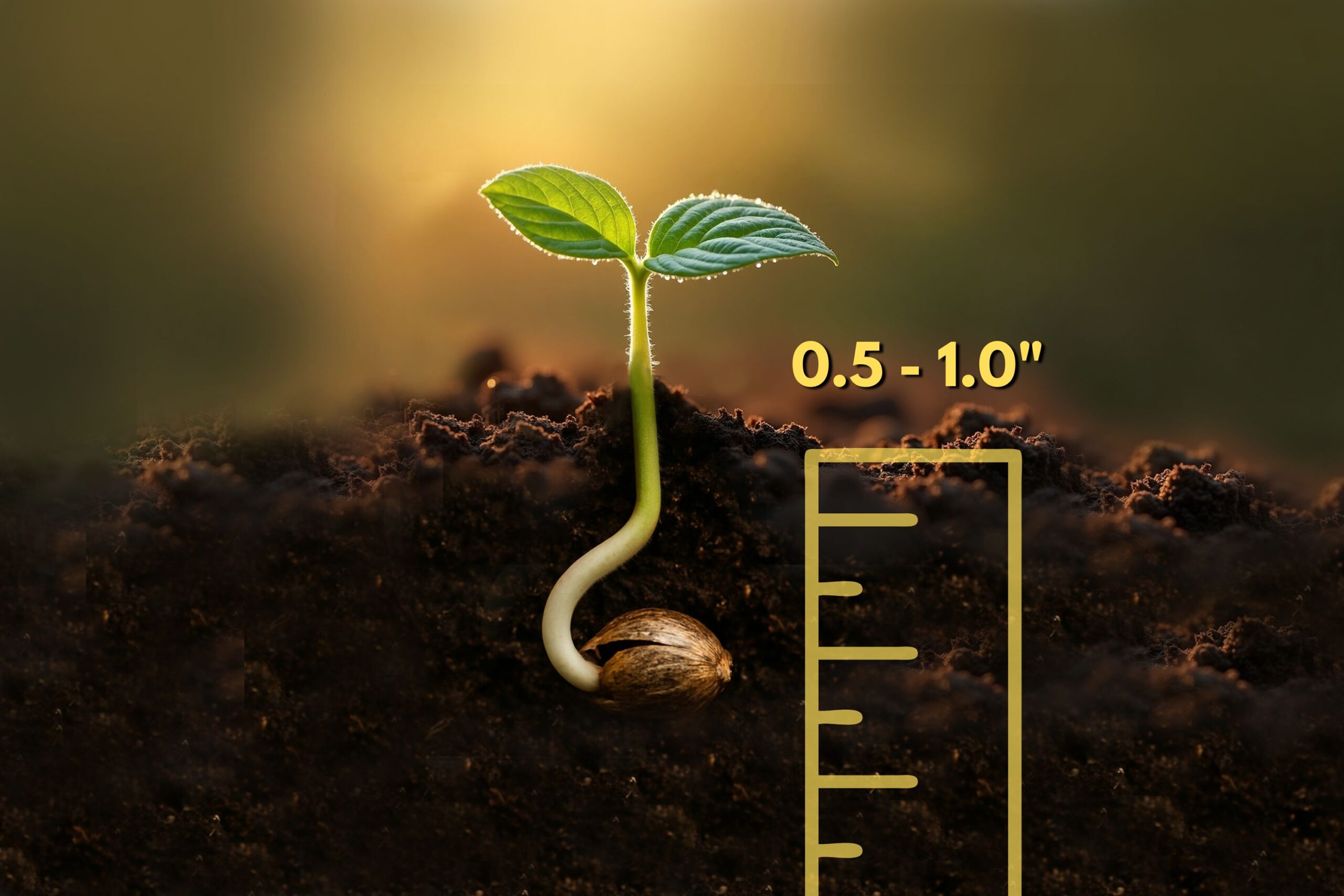
Usually 0.5 to 1 inch (1.25 to 2.5 cm) deep in the growing media, the ideal depth to put germinated cannabis seeds is This depth lets the taproot develop down while yet being deep enough to cover with soil to trap heat and moisture. This ideal depth can be influenced by several factors including environmental conditions, seed size, and kind of growing media used.
Characteristics Influencing
The depth, size, and variety of the cannabis seeds could perhaps create a little change in the planting depth. While larger seeds may need somewhat deeper planting to help with appropriate root growth, smaller seeds may be placed more aesthetically. But, no matter the seed size, it’s best to plant it shallowly, as it will take more energy to break through the surface. Likewise, planting the seed too shallow exposes it to light and can stop the taproot from growing.
Valuation of the Soil’s Surface
Covering a germinated seed with just enough soil will help to preserve the correct moisture levels and prevent drying out. By overcompacting the soil, one might build a barrier around the seed that restricts water access and airflow. Instead, a thin coating of either soil or medium is used to prevent the seed from becoming crowded and constricted or buried as it spreads outward. Furthermore, it crucial is not packing the expanding medium too tightly since this would prevent the taproot from sprouting as it tries to root downward, so stressing the seedling unnecessarily.
Best Growing Media for Germinated Seeds
Plant depth depends much on the appropriate growing media used. The physical structure of your selected substrate, water retentivity, and nutritional condition all affect the ease with which a germinated seed may establish itself and keep on developing. Every media will have a specified ideal range under which to grow a seedling; knowledge of the variations will tell you when to plant germinated seeds into soil and the sowing technique to get best return.
1. Soil
Soil is the most natural and prevalent growing medium for cannabis. A light, well-ventilated seed-starting mix works best over a heavy, nutrient-rich potting soil for germinated seeds. Heavy soils cover over the seed and slow down root development. To allow oxygenation and drainage, the finest combinations are peat moss, perlite, and coco coir.
Make a hole around 0.5 to 0.75 inch depth for soil planting, slightly moistening it before seed is sown. Over the planted hole, loosely cover the ground without compassing or tamping it. Fertilizer soils should also be avoided during this period since developing roots are quite prone to burn from nutrients.
2. Coco Coir
Excellent aeration and water retentive properties abound from the inert green medium known as coconut coir. It dries out faster than soil, hence moisture has to be regulated. Always correctly buffer coco to prevent two things present in unbuffered coco: calcium and magnesium lockout.
In coconut coir, the perfect depth of planting is a little bit deeper—0.75 to 1 inch. This added depth shields the root zone and holds moisture. When the first true leaves show up, seedlings will need light feeding—that is, a root stimulator—that has been diluted since coco is sterile and nutrient-free.
3. Cube of Rockwools
Hydro systems make extensive use of rockwool, which has some special qualities must be controlled also. To reduce their higher natural pH level before plantation, steep the cubes in pH-level water (5.5–6.0). Carefully place the germinated seed gently within the pre-made hole, down towards taproot.
Don’t plant too deeply into rockwool; the hole should cover the seed entirely, but not buried in too much more material. Put it in, and gently press the top of the opening closed to keep it wet. Put the cubes under a dome of humidity or plastic wrap until the seedling shows since rockwool needs a high humidity level to prevent drying out.
Environmental Factors for Effective Sprouting
Although depth of planting is important, the right germination of a cannabis seedling depends on environmental circumstances as well. The ability of the seed to sprout and develop depends on temperature, humidity, and light. As important as planting them at the right depth is providing germinated seeds with the optimal surroundings.
Temperature
To germinate properly, cannabis seeds require a warm and consistent surroundings. Between 72°F and 78°F (22°C and 26°C), seedlings grow best. Seeds will germinate in few days at this temperature, and the root system will grow fast. A temperature drop too low will slow down or inhibit seedling development. Furthermore increasing the fragility of young plants under low temperatures are destructive fungus and mold.
Humidity
For cannabis seedlings, high humidity is absolutely essential since it helps them not to dry out during root system development of the plant. For cannabis seedlings, an ideal humidity range is 65% to 75% relative humidity (RH). The plant can absorb moisture, but it cannot dry out at this humidity level. Though molding results from too high humidity, so constant monitoring of moisture levels is necessary.
Lighting
Growing cannabis depends on light, although early development calls for not strong light. To help the plant develop higher, seeds germinated should be under low-intensity light—such as fluorescent or LED bulb. Strong light intensity will tax the plant and stop fragile seedlings from growing. The seedling will start growing in the direction of the light as soon as it pushes through the ground or media.
Typical Mistakes and Strategies for Avoidance
Growers with best of intentions will occasionally make avoidable mistakes that compromise the germinated seeds’ success. Early identification and correction of these mistakes will help to This will prevent wasted time and aggravation, particularly for those dealing with limited seed supply or difficult-to-find genotypes.
One of the most common issues is excessively deep planting. A seed sown more than one inch deep can find it difficult to germinate, especially if the medium is dense or soggy. Either weak, leggy development or death before emergence results from the seedling using all of its stored energy trying to emerge. Always check your planting depth and cover the seed just lightly to stop this.
Furthermore stopping development is inappropriate taproot direction. Planting the seed with an upward- or lateral-oriented taproot will cause it to twisted unusually or bent above ground. This strains the plant and may slow down long-term expansion. Plant always with the taproot pointing down; if needed, use sterile tweezers.
Another error is underwatering. Though not to the degree of waterlogging, germinated seeds need water. Chronic wet circumstances reduce the oxygen supply for the seed and encourage Pythium, damping-off, fungus. Rather, maintain the damp but not wet environment. Miste the top using capillary action from water below or a spray bottle.
Post-planting Maintenance for the Seedling
For the first five to ten days after planting, cannabis seedlings require close attention.
- Do not disturb the medium; avoid pushing or prodding where the seed is.
- Soft air flow helps to stiffen up developing stems and fight mould.
- Inspect for sprout: Most seedlings will emerge through the surface within 2–5 days. If not, check temperature and moisture before planting.
A seedling growing with the shell on can be left on for up to 24 hours. Should it not fall off on its own, gently remove it using sterile tweezers.
Conclusion: Plant Deep Enough—But No Deeper
How deep should a seed be planted? Giving your seed a successful start depends on planting germinated cannabis seeds at the right depth—a half inch to an inch below. This one easy action prepares the ground for strong development, good roots, and a plentiful plant. Respecting the needs of your medium, surroundings, and sensitive biology of your seed will help you provide your grow the best opportunity for success.





